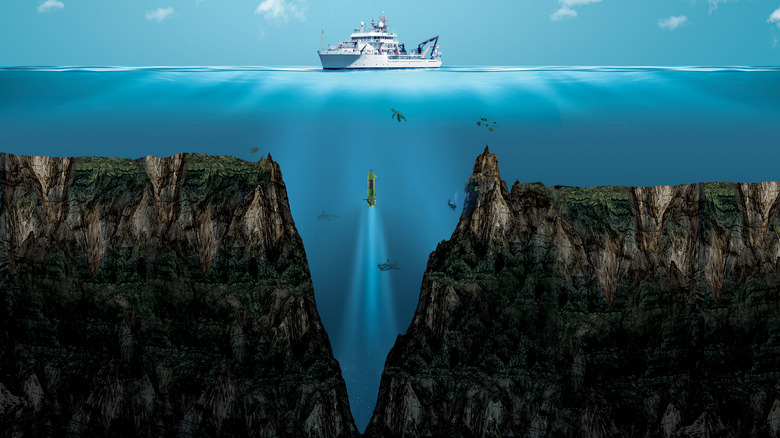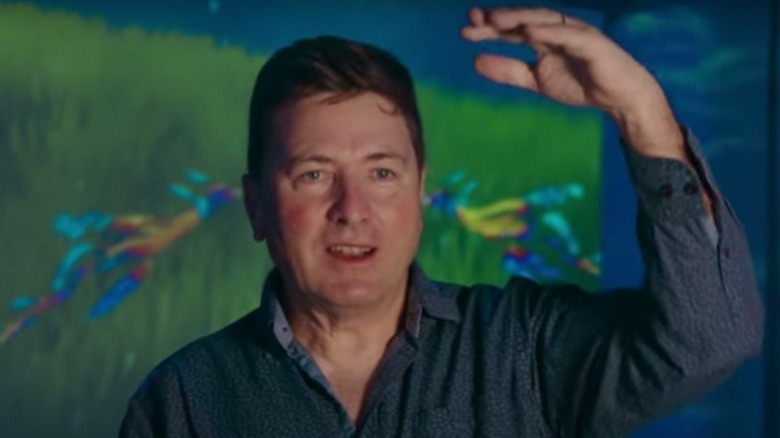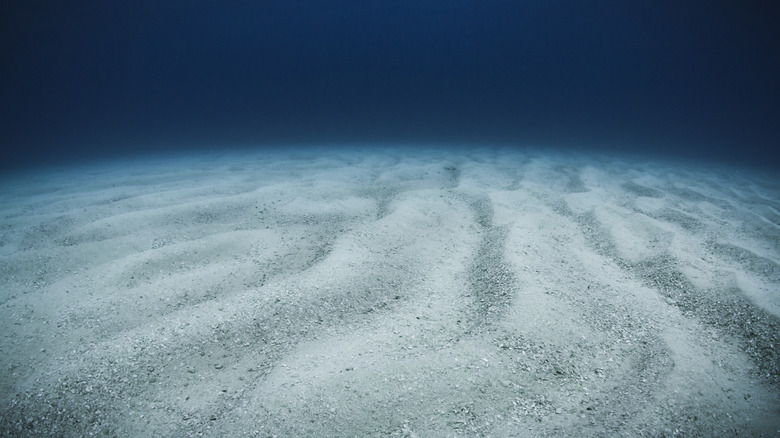The Terrifying New Sea Life Discoveries Made Off The Coast Of Cocos Islands
The deep sea is often seen as one of the scariest places on Earth, with up to 80% of it remaining unexplored (via the National Oceanic and Atmospheric Administration). The mystery of the deep sea may be largely due to the fact that it is so hard to explore. According to Oceana, the pressure beneath the surface makes exploring the depths of the ocean extremely difficult. Luckily, scientists do not need to dive into the pitch black waters thanks to remote cameras and other devices that make studying the deep sea from the surface much easier, although some of us would prefer to not know what might be down there.
A team of biologists just returned from studying marine life in uncharted waters of the Indian Ocean near Cocos Islands, and what they found was surprisingly terrifying. According to Live Science, the research team was on a 35-day expedition to study the mostly unexplored area. During their time around the Cocos Islands, mapping of the area revealed new underwater mountain peaks and previously undiscovered deep sea creatures (via Museums Victoria).
The biologists collected samples of several strange creatures
During their time sailing around the Cocos Islands, the team of biologists were able to collect samples and videos of several of the unique deep-sea creatures that live there. According to Daily Mail, this included a video of a previously-unknown eel, which has transparent skin and is completely blind. What's more, this unique eel also gives birth to live young instead of laying eggs like most other eels and fish (via National Geographic).
Other findings made by the biologists were listed on the media release for the project at Museums Victoria. Museums Victoria Research Institute's Dr. Tim O'Hara (above), Chief Scientist of the expedition, stated, "we have discovered an amazing number of potentially new species living in this remote marine park." These findings included the Tribute Spiderfish with its long lower fins designed for walking along the ocean floor, the Pelican Eel and its enormous jaw and expandable stomach, the Sloane's Viperfish and its teeth that are visible even when its mouth is closed, and so much more.
The research team also mapped the ocean floor in the area
In addition to the discovery of new deep-sea creatures, the research team was also able to spend time studying the habitat in which they live. According to Daily Mail, this included 3-dimensional maps of underwater mountains, which had never been seen in such detail up until now.
The features found by this underwater mapping were more impressive than the team could've imagined. As Dr. O'Hara, lead researcher, explained, "some seamounts predicted to be shallow had subsided into the deep-sea, others had cones or drowned reefs that almost reached the surface. The sheer size of some of the features was amazing" (via Live Science). In an article on CSIROscope, Nelson Kuna, a hydrographic surveyor on the expedition, shared his gratitude for being part of this discovery: "It's truly an honor to see, for the first time, these stunning underwater features revealed from the deep."


